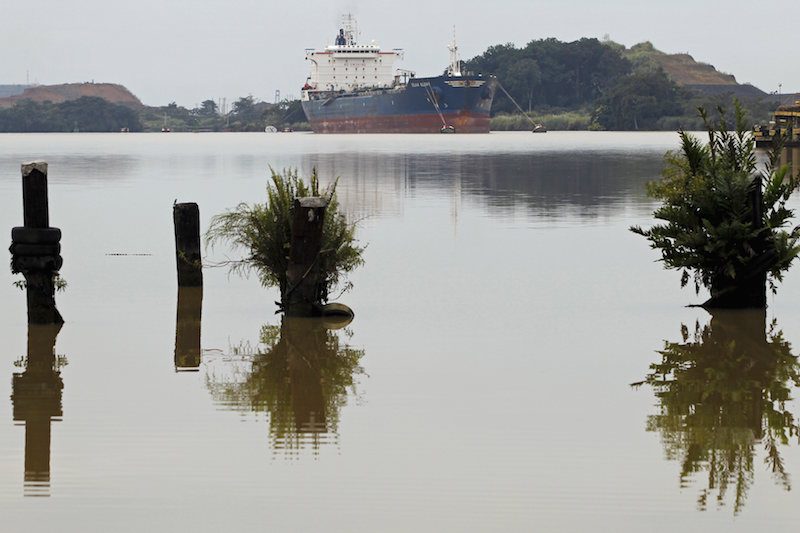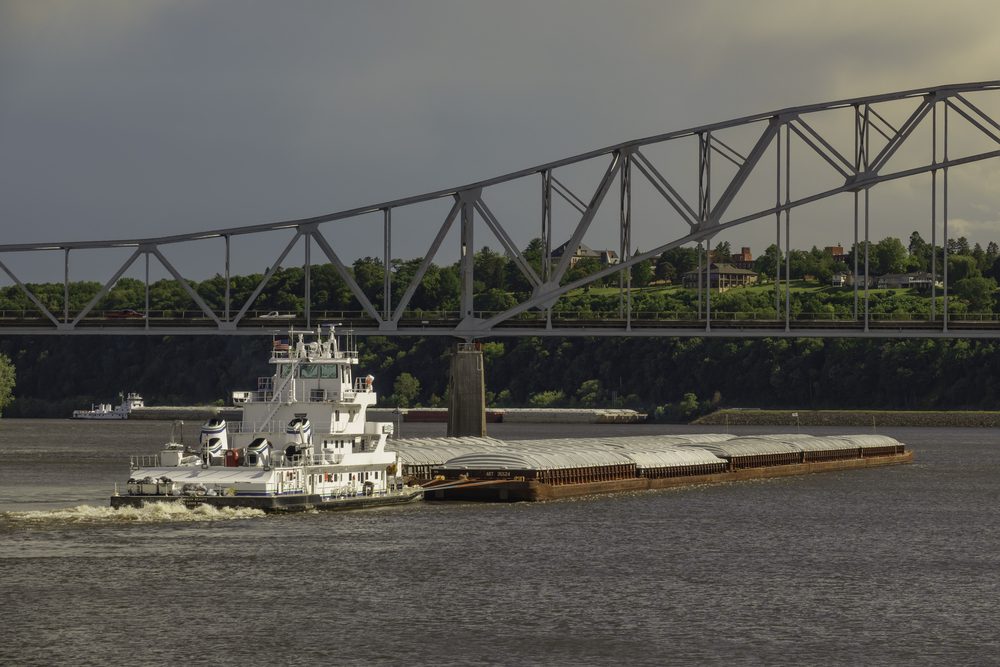A cargo ship is seen on the Panama Canal in Panama City August 10, 2015. REUTERS/Carlos Jasso
By Gavin van Marle
(The Loadstar) – The continuing low levels of the waters of Gatun Lake in Panama could pose a long-term challenge for the country’s canal authority, as it prepares to unveil its expansion project and usher in a new era of big ships transiting the waterway.
Last week the Panama Canal Authority (ACP) made two important announcements – it set 26 June as the date when the country’s president Juan Carlos Verela will officially open the new locks; but also said it will introduce a vessel draft restriction of 39ft (11.89 metres) on 18 April as a result of El Niño-related changes in weather patterns.
“These temporary and preventive measures will be taken due to an anticipated climatic variability event related to El Niño, a climate phenomenon resulting in periodic warming of the tropical Pacific Ocean.
“When this occurs, El Niño changes the pattern of rainfall in many regions of the planet. In this case, it has triggered a drought in the Canal Watershed, causing the water levels of Gatun and Alhajuela Lakes to fall substantially below their average for this time of year,” ACP explained in a statement.
However, one of the canal’s largest users, specialised reefer vessel operator Seatrade, suggested recently that the problem could affect ship operators’ faith in the waterway, especially given that its expansion project was predicated on attracting far larger vessels.
“One of the problems with Panama right now is that there are two metres [of water] less in its lakes, which is very serious, and if this continues because of El Niño or La Niña, or whatever it is, it might put the transits in danger in Panama,” Seatrade chief executive Yntze Buitenwerf told delegates at a seminar organised on the sidelines of the recent Fruit Logistica show in Berlin.
The problem, of course, is that most container ships in the class rapidly becoming known as the New Panamax size, have a draft of around 15 metres, with the published draft of the new locks at 15.20 metres – significantly deeper than the new restrictions.
And even if the canal does see an increase in vessel sizes, once the El Niño phenomenon has passed on and the water levels resume, Mr Buitenwerf argued that smaller vessels such as those operated by Seatrade will remain operationally competitive.
“Small competes on the Panama Canal – the big ships go during day time and the small ships such as ours go in the nights,” he said, explaining that Seatrade is currently the largest user of the canal in terms of number of transits, with 420-430 per year.
“For the smaller sub-Panamax ships it’s good that they have expanded the canal because it means we will have less waiting time, and smaller vessels could also benefit because there will be less congestion through the old lock.
“But what if there is congestion in the new widened canal? Will lines have to cascade back smaller tonnage?” he added.
Additionally, there is only likely to be capacity for 15 larger vessels to transit the waterway per day, he said.
“There will be a maximum of 18 transits per day through the new locks for the big ships. Of these 18 transits, the Americans have just “confiscated” three transits per day to serve their exports of shale gas, and although that’s officially not allowed, a special regime has been put in place.
“In the meantime the Panama Canal is going to see bigger ships, but it isn’t going to result in faster transit times. That means there will be the development of large hubs. Where these hubs will be remains open to question. Will they be in the Caribbean or the West Coast of South America, or even North America? That doesn’t seem clear to me.”
However, Mr Buitenwerf did accept that larger ships will benefit from their economies of scale, despite his attempts to win transit fee concessions from the ACP.
“The authorities have promised me with their hand on their heart that they will not increase fees for the first two years. But that’s all we get – charges are going up everywhere, in all the ports around the world and also at the Panama Canal.
“The dues are based on the number of containers that you carry. So if you use a bigger ship you pay more, but less per container. It’s a very complex system, but if you put it in perspective I think we are paying more for our use of the canal and it is sad to see that if you are a very frequent user you don’t get some kind of rebate.
“We have been fighting for that for a long time – we are there everyday with 1.4 ships – and we believe we should get some kind of rebate, but we haven’t had much luck with that and the canal remains a very expensive business,” he said, adding the largest ships to transit will pay $300,000-400,000 per transit, while Seatrade currently pays around $120,000 per transit.
The Loadstar is fast becoming known at the highest levels of logistics and supply chain management as one of the best sources of influential analysis and commentary.
Check them out at TheLoadstar.co.uk, or find them on Facebook and Twitter.

 Join The Club
Join The Club











